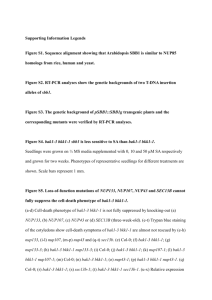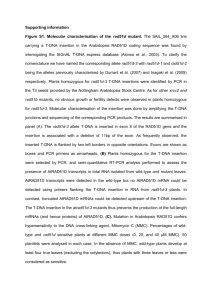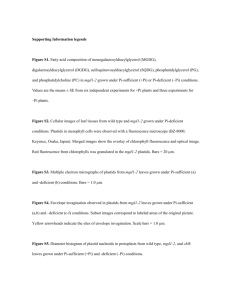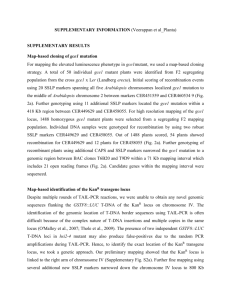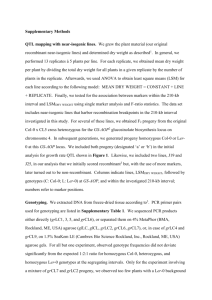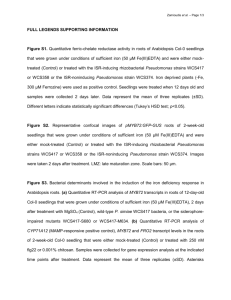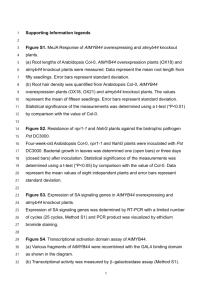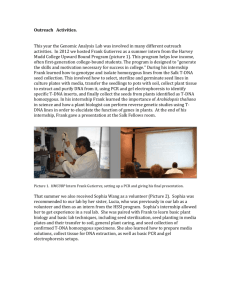tpj12323-sup-0006-Legends
advertisement
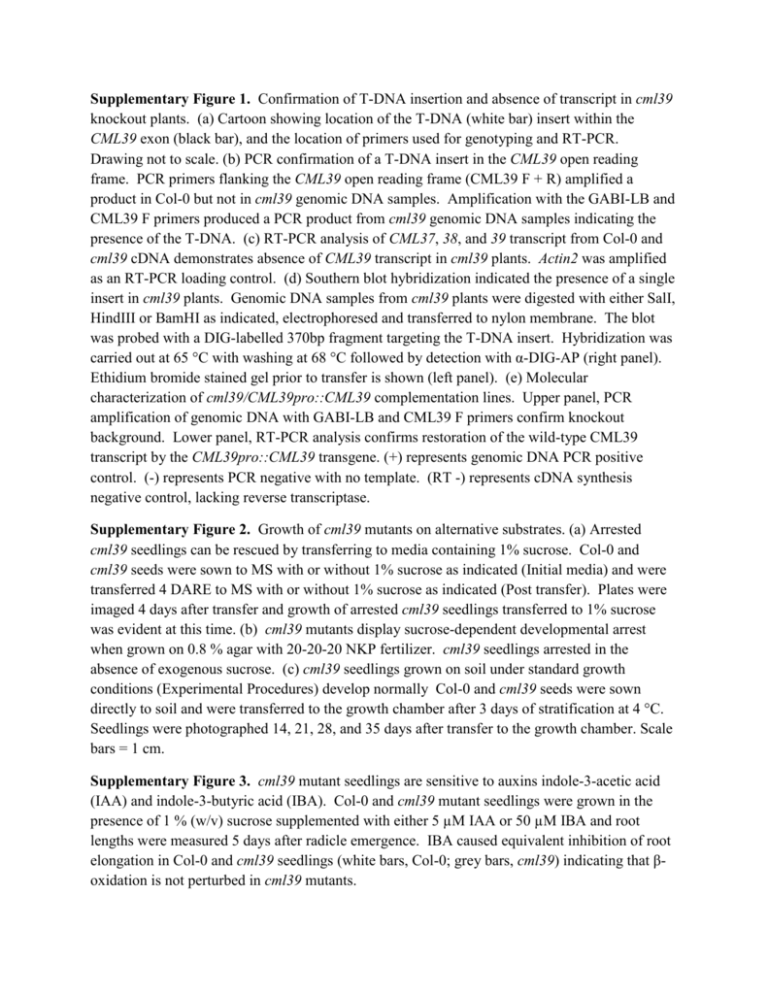
Supplementary Figure 1. Confirmation of T-DNA insertion and absence of transcript in cml39 knockout plants. (a) Cartoon showing location of the T-DNA (white bar) insert within the CML39 exon (black bar), and the location of primers used for genotyping and RT-PCR. Drawing not to scale. (b) PCR confirmation of a T-DNA insert in the CML39 open reading frame. PCR primers flanking the CML39 open reading frame (CML39 F + R) amplified a product in Col-0 but not in cml39 genomic DNA samples. Amplification with the GABI-LB and CML39 F primers produced a PCR product from cml39 genomic DNA samples indicating the presence of the T-DNA. (c) RT-PCR analysis of CML37, 38, and 39 transcript from Col-0 and cml39 cDNA demonstrates absence of CML39 transcript in cml39 plants. Actin2 was amplified as an RT-PCR loading control. (d) Southern blot hybridization indicated the presence of a single insert in cml39 plants. Genomic DNA samples from cml39 plants were digested with either SalI, HindIII or BamHI as indicated, electrophoresed and transferred to nylon membrane. The blot was probed with a DIG-labelled 370bp fragment targeting the T-DNA insert. Hybridization was carried out at 65 °C with washing at 68 °C followed by detection with α-DIG-AP (right panel). Ethidium bromide stained gel prior to transfer is shown (left panel). (e) Molecular characterization of cml39/CML39pro::CML39 complementation lines. Upper panel, PCR amplification of genomic DNA with GABI-LB and CML39 F primers confirm knockout background. Lower panel, RT-PCR analysis confirms restoration of the wild-type CML39 transcript by the CML39pro::CML39 transgene. (+) represents genomic DNA PCR positive control. (-) represents PCR negative with no template. (RT -) represents cDNA synthesis negative control, lacking reverse transcriptase. Supplementary Figure 2. Growth of cml39 mutants on alternative substrates. (a) Arrested cml39 seedlings can be rescued by transferring to media containing 1% sucrose. Col-0 and cml39 seeds were sown to MS with or without 1% sucrose as indicated (Initial media) and were transferred 4 DARE to MS with or without 1% sucrose as indicated (Post transfer). Plates were imaged 4 days after transfer and growth of arrested cml39 seedlings transferred to 1% sucrose was evident at this time. (b) cml39 mutants display sucrose-dependent developmental arrest when grown on 0.8 % agar with 20-20-20 NKP fertilizer. cml39 seedlings arrested in the absence of exogenous sucrose. (c) cml39 seedlings grown on soil under standard growth conditions (Experimental Procedures) develop normally Col-0 and cml39 seeds were sown directly to soil and were transferred to the growth chamber after 3 days of stratification at 4 °C. Seedlings were photographed 14, 21, 28, and 35 days after transfer to the growth chamber. Scale bars = 1 cm. Supplementary Figure 3. cml39 mutant seedlings are sensitive to auxins indole-3-acetic acid (IAA) and indole-3-butyric acid (IBA). Col-0 and cml39 mutant seedlings were grown in the presence of 1 % (w/v) sucrose supplemented with either 5 µM IAA or 50 µM IBA and root lengths were measured 5 days after radicle emergence. IBA caused equivalent inhibition of root elongation in Col-0 and cml39 seedlings (white bars, Col-0; grey bars, cml39) indicating that βoxidation is not perturbed in cml39 mutants. Supplementary Figure 4. Ca2+-dependent phenyl-sepharose purification of recombinant CML39. CML39 was bound to the column in the presence of 5 mM CaCl2, and was eluted from the column by removal of Ca2+ with 20 mM EGTA. Pre, urea solubilised bacterial extract; FT, flow through; W, wash; E, elution. Supplementary Figure 5. Molecular characterization of CML37 (a) and CML38 (b) T-DNA knockout (cml37 and cml38, respectively) plants. Genomic DNA was isolated from transgenic seedlings and was PCR amplified using the primer pairs indicated. Gene specific primers did not produce a PCR product in cml37 or cml38 samples, and amplification using the SALK border primer indicated the presence of a T-DNA insert in the CML37 and CML38 exons. Analysis of CML37, CML38, and CML39 transcript in cml37 and cml38 seedlings confirmed that only CML37 and CML38 expression was reduced in their respective T-DNA insertion lines.

